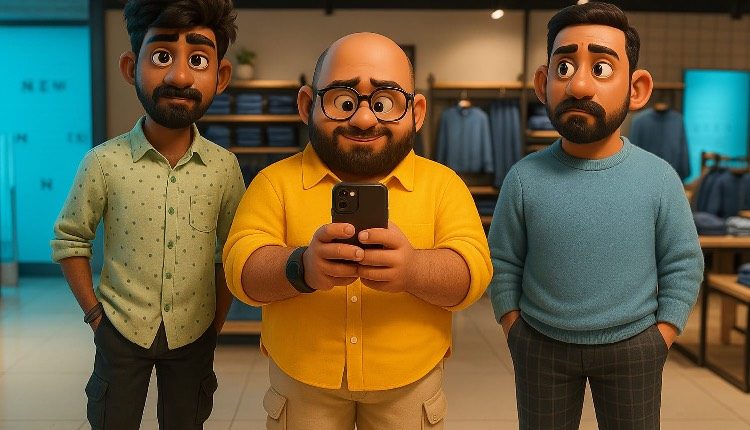Pixar. The name conjures images of vibrant, emotionally resonant animation, a seamless blend of technical wizardry and artistic storytelling. While we’re all familiar with their signature visual style in films, what if we could distill that essence into a specific image format? Imagine a file type, let’s call it “.pxr,” designed to capture the very soul of Pixar’s aesthetic. This blog explores the hypothetical concept of a Pixar Style Image Format, delving into its potential characteristics, technical considerations, and artistic implications.
The Vision: Capturing the Pixar Magic
The core idea behind a “.pxr” format isn’t just about storing pixels; it’s about encoding artistic intent. It would aim to encapsulate the visual language Pixar has mastered, a language that speaks of warmth, depth, and a touch of stylized realism.
Key Characteristics of a Hypothetical .pxr Format:
-
Enhanced Color Depth and Gamut:
- Pixar’s visuals are renowned for their rich, nuanced colors. A “.pxr” format would go beyond standard RGB color spaces, supporting wider gamuts and higher bit depths.
- Imagine the ability to store subtle color variations, the way light interacts with surfaces, and the emotional impact of color palettes with unparalleled fidelity.
- This would include support for HDR and potentially even spectral rendering data.
-
Volumetric Data and Subsurface Scattering:
- Pixar excels at rendering materials with realistic depth and translucency. Think of the way light penetrates skin, foliage, or even the surface of a toy.
- A “.pxr” format could store volumetric data, allowing for accurate representation of subsurface scattering and other complex lighting effects.
- This would mean that the format stores not just a surface colour, but how light interacts with the material beneath the surface.
-
Stylized Geometry and Normal Data:
- Pixar’s characters and environments often feature stylized geometry, with exaggerated proportions and smooth curves.
- A “.pxr” format could store not only the surface normals (which define how light reflects off a surface) but also stylized normal data, capturing the unique curves and contours of Pixar’s artistic vision.
- This would include vector displacement maps, and vector normal maps.
-
Layered Artistic Control:
-
- Pixar’s artists meticulously craft every frame, using layers of detail to build depth and visual interest.
- A “.pxr” format would support layered data, allowing for separate storage of base colors, lighting information, texture overlays, and post-processing effects.
- This would act similar to a PSD or similar file, but specifically for Pixar style rendering.
-
-
Metadata for Artistic Intent:
- Beyond raw pixel data, a “.pxr” format would store metadata that captures the artist’s intent. This could include information about the lighting setup, the intended emotional tone, and even the story behind the image.
- This information could be used for AI based style transfer, or for later post processing.
- This would include information about colour grading, and intended camera angles.
-
Efficient Compression for High-Quality Results:
- Given the vast amount of data involved, a “.pxr” format would require efficient compression algorithms.
- These algorithms would need to preserve visual fidelity while minimizing file size, allowing for seamless sharing and storage.
- Potentially, vector based compression could be used, for parts of the image that are based on vector data.
Technical Considerations:
- File Structure: A “.pxr” file would likely be a complex container format, similar to a TIFF or OpenEXR file, capable of storing multiple data streams.
- Rendering Engine Integration: To fully realize the potential of a “.pxr” format, rendering engines would need to be designed to interpret and display its data accurately.
- Software Support: Creating and editing “.pxr” files would require specialized software, potentially developed by Pixar or other industry leaders.
- Standardization: For widespread adoption, a “.pxr” format would need to be standardized, ensuring compatibility across different platforms and applications.
Artistic Implications:
- Democratizing the Pixar Look: A “.pxr” format could make Pixar’s signature visual style more accessible to artists and creators outside of the studio.
- Enhanced Creative Control: Artists would have greater control over the look and feel of their images, allowing for more nuanced and expressive work.
- New Possibilities for Storytelling: The ability to capture artistic intent in a digital format could open up new possibilities for visual storytelling.
- AI and Style Transfer: The rich meta data could be used to train AI models to mimic the Pixar style.
Challenges and Limitations:
- Complexity: Developing a “.pxr” format would be a complex undertaking, requiring significant research and development.
- File Size: Storing volumetric data and layered information could result in large file sizes.
- Software Adoption: Convincing software developers to support a new image format could be challenging.
- Subjectivity of Style: Defining and encoding a specific artistic style is inherently subjective.
The Future of Visual Storytelling:
While the “.pxr” format remains a hypothetical concept, it raises intriguing questions about the future of digital imaging. As technology advances, we may see the emergence of image formats that go beyond simple pixel storage, capturing the very essence of artistic vision.
Imagine a world where artists can share not just images, but the emotions and stories embedded within them. A world where digital art transcends the limitations of traditional formats, unlocking new levels of creativity and expression. While this future may be years away, the hypothetical “.pxr” format offers a glimpse into the exciting possibilities that lie ahead.
The pursuit of capturing the essence of Pixar’s style in a file format, is a goal that would bring a massive change to the digital art world. It would be a tool that would allow creators to bring their visions to life, with a level of control that has never been possible before.


Comments are closed.